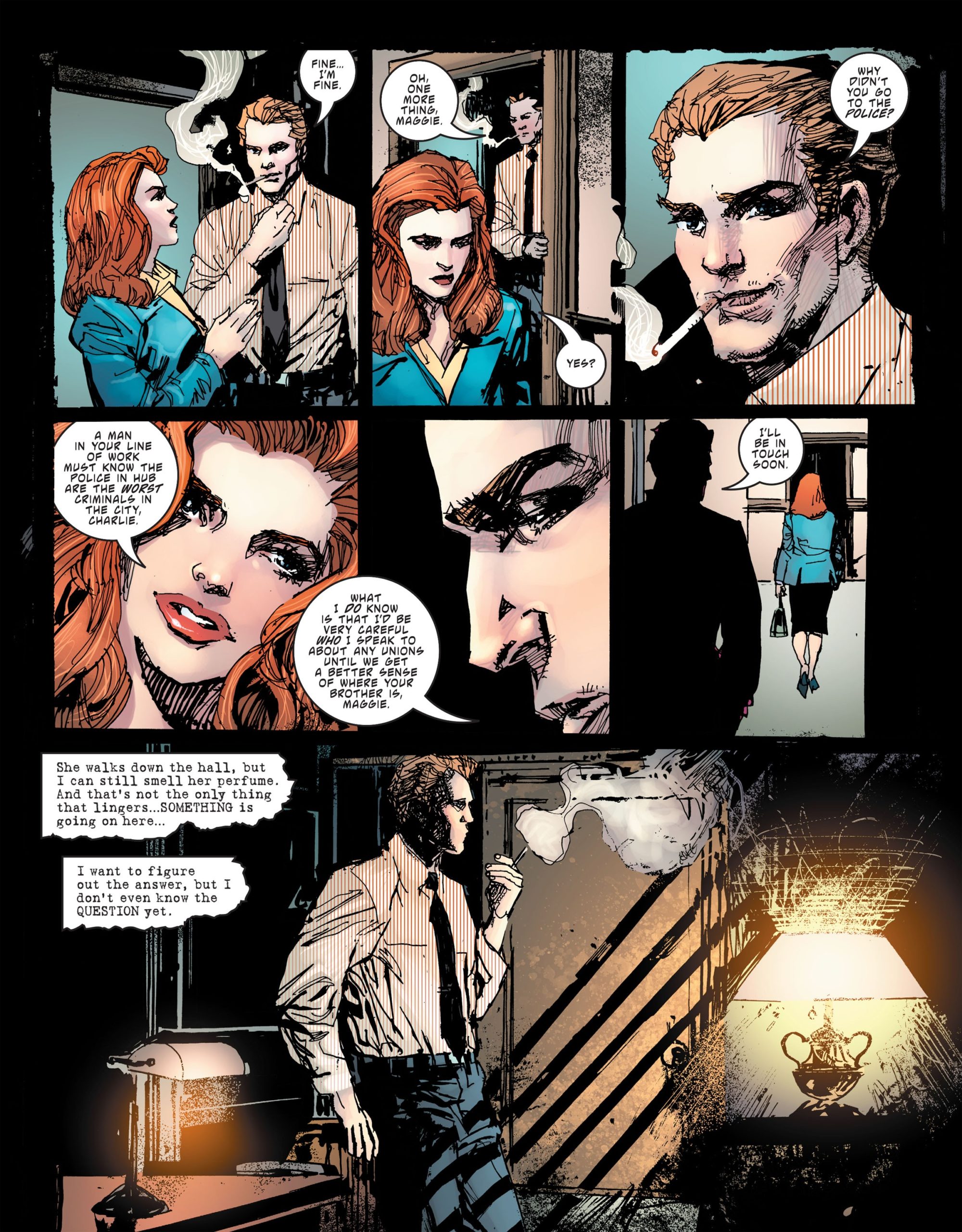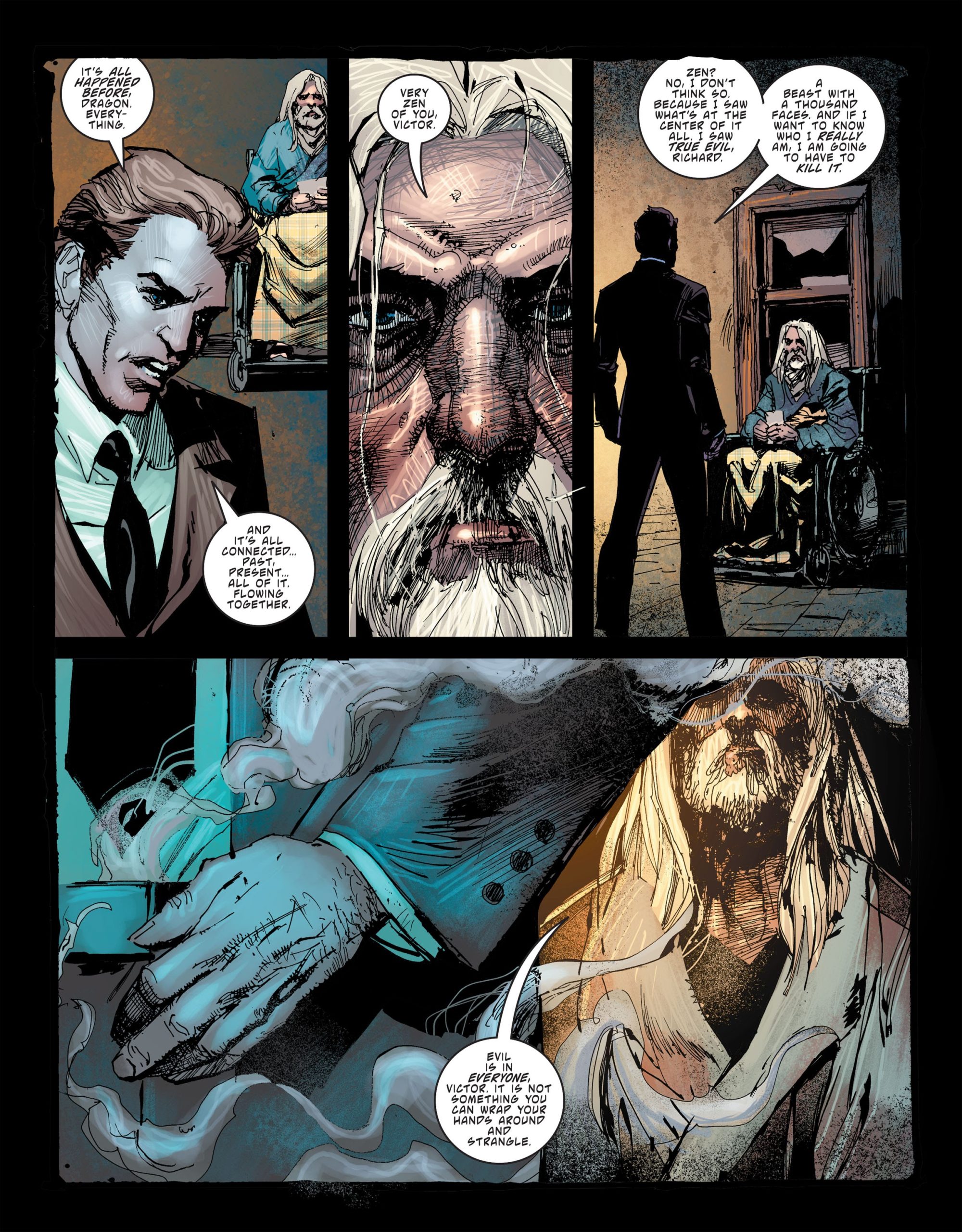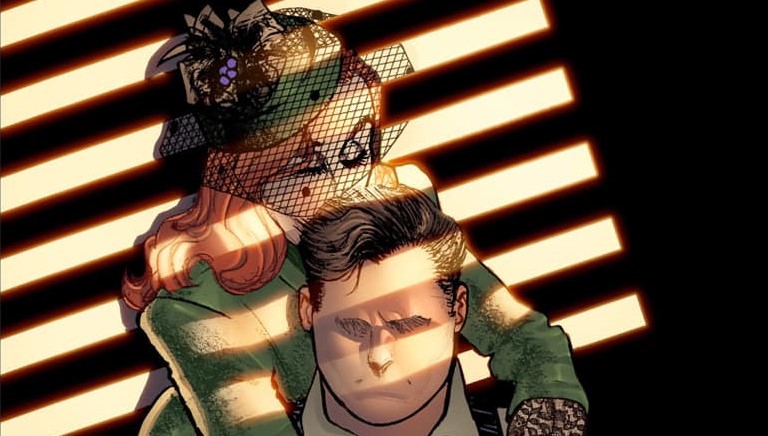Table of Contents Show
The Question: The Deaths of Vic Sage #3 tells the story of another version of Vic Sage in the 1940s. Much like the previous versions of the character seen throughout this series so far, he is a man trying to redeem himself in some way while finding himself wrapped up in mystery playing itself out throughout history. This issue furthers that mystery, plays on some noir tropes in a fun way, and even furthers Vic character development, and I mean all versions of him at the same time.
The Question’s Noir Style
The Question has always had crime noir elements to the character, but that was never the focus of the character. When you boil down The Question the bar essentials you have a man looking for redemption, trying to be a good man in a rotten world that has the deck stacked against him, and the truth is often just as harmful as the lies, but the truth must always come out.
These are core tenants of the noir genre as well, but because The Question takes place in the DC universe, most of his stories use these noir trappings to strengthen the superhero genre aspects of the stories. The Question: The Deaths of Vic Sage #3 makes the noir elements of the character the centerpiece for the issue and as a result strengthens the overall narrative.

Where before the noir elements were used to examine the superhero genre, now the superhero genre is being used to examine the noir genre. We have the femme fatale that shows up to give the detective the case, we have the shady underbelly of the city, we have the law enforcement being just as much the villain as the criminals themselves. This, despite this being written before the protests that sprung up across the United States, is very topical.
The noir genre and by extent the superhero genre are very anti-police, either stating that they are corrupt or incompetent enough that something must be done. Both genres have a sense of fighting the system within them that is all the more important to today’s world than many people realize.
I like how there is a constant, almost overwrought narration by Vic throughout this issue questioning why he took on the case. In most noir stories, the main character questions why they took the job in the first place, knowing that it’s going to bring hell down upon them. But there is a glimmer of hope at the end of the tunnel both for the world that the character lives in but also for the character themselves. Considering redemption is the center of Vic’s character this helps us to understand him and his almost contradictory view on life.
Connections To Dennis O’Neil
The Question: The Deaths of Vic Sage #3 came out only a few days after the death of legendary writer Dennis O’Neil. Beyond his reinvention of Batman, creation of Ra’s al Ghul, amazing run on Iron Man, and his countless other creations and influence on the comic industry, he had a very famous run on The Question. Some, including myself, consider it to be the best run on The Question ever and potentially one of the best runs in comic book history. So the connection I found in this issue to that run were much appreciated and saw as a tribute to O’Neil even if it wasn’t initially intended that way.

Richard Dragon, a character also created by O’Neil in a book and later adapted to comics, show back up after a brief appearance in the first issue. In this issue, he talks about that good and evil are not easily defined, that they are in all of us at the same time and there is a balance that must be found. That evil is not something you can put her hands around and strangle to death, evil will always be with us no matter what. This is very similar to the lessons that Vic Sage learned in O’Neil’s run on the character. He had to learn that he could not punch away his problems and that he was flawed being that couldn’t be wholly good or wholly bad.
The Question: The Deaths of Vic Sage #3 Was What Question Fans Needed Right Now
The Question: The Deaths of Vic Sage #3 came out at a time that I was looking for something to reaffirm why I loved the character. I had just lost the man that I saw as the architect of the character and his world, and to see an issue fully encapsulate this character’s journey was a sight to behold. So thank you Jeff Lemire and Denys Cowan for delivering a love letter to the character and inadvertently a love letter to Dennis O’Neil. May he rest in peace.
